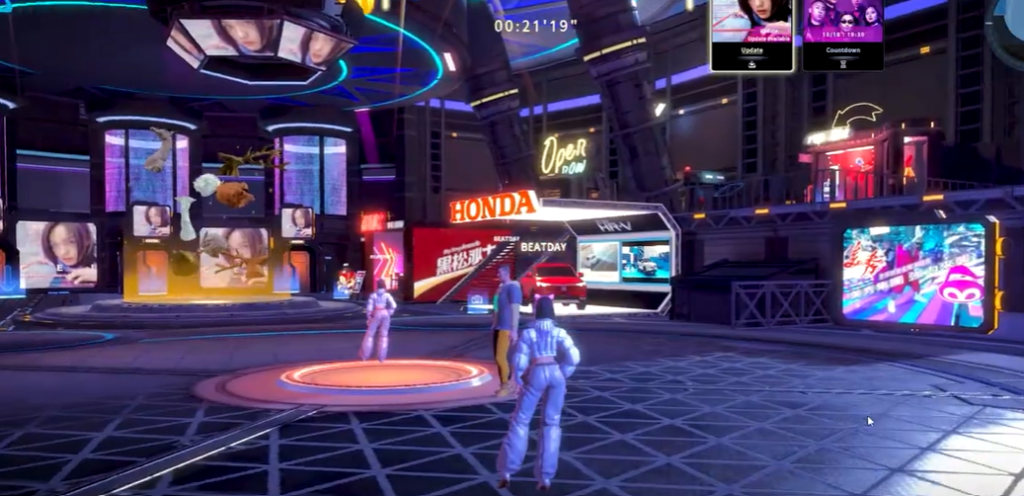According to Amy LaMeyer, her first virtual concert was “strangely electric.” Wearing a virtual reality headset, she stood by herself in her living room, watching Thievery Corporation perform through immersive lenses that simultaneously made her feel close and far away. She laughed at herself, clapped, and danced as a virtual audience member at a private performance. It was a remarkably successful but subtly unfinished experience. It reflected a question influencing the direction of music: will virtual concerts ever be able to fully replace live performances?
Virtual concerts seem especially novel to a generation used to streaming rather than waiting in line. They guarantee front-row access without the hassles of crowds, travel, or cost. Performances are being transformed into interactive, visually stunning experiences by platforms like AmazeVR, Wave, and NextVR. Fans can participate in backstage Q&As, switch between camera angles, or even hover over a holographic stage. When an artist like Travis Scott can attract 27 million viewers in a single Fortnite event, the convenience is definitely alluring.
This accessibility is especially helpful to many. Previously requiring hotel stays and plane tickets, a concert can now be enjoyed from the comfort of a sofa. Fans who are unable to attend in person because of financial constraints, physical limitations, or geographic location can now be included thanks to the digital format. The warmth of bodies swaying together or the emotional tremor of a crowd singing in unison are two aspects of live energy that virtual concerts cannot replicate, despite their increasing reach. It is impossible to replace those visceral sensations.
Personal and Professional Information
| Category | Details |
|---|---|
| Name | Amy LaMeyer |
| Profession | Virtual Reality Strategist and Live Music Innovator |
| Nationality | American |
| Known For | Pioneering virtual concert experiences with Live Nation and NextVR |
| Industry Role | Advisor for VR/AR integrations and immersive live performance design |
| Notable Projects | Collaborations with Live Nation, Citi, and NextVR on immersive concert broadcasts |
| Focus Area | Intersection of virtual technology and live entertainment |
| Education | B.S. in Engineering; M.B.A. with a focus on emerging technologies |
| Current Work | Consulting on metaverse and live-event integration for global artists |
| Reference | https://www.wired.com/brandlab/2017/07/live-concerts-take-the-virtual-out-of-virtual-reality/ |

The artists themselves are aware of this constraint. It seems strikingly true that Lady Gaga once described live performances as “a conversation between hearts.” Coldplay’s Chris Martin acknowledged that performing in front of cameras was like “singing into glass.” Virtual concerts might be visually stunning, but they don’t have the same physical resonance as live performances. The vibrations of the air in a stadium are not the same as those in a headset. Technology finds it difficult to replicate the electricity of our common humanity.
Nevertheless, the digital stage is a very flexible future for the industry. Hybrid concerts, which combine presence and performance, were first introduced by Live Nation’s partnerships with Citi and NextVR. These experiences combine the finest aspects of both formats by putting fans backstage, providing panoramic views, and incorporating interactive elements. Virtual stages have been used by artists like Billie Eilish and Dua Lipa as creative canvases rather than replacements, enhancing rather than replicating live energy.
In terms of technology, the benefits are very obvious. The logistical obstacles of travel, venue rental, and stage setup are removed by virtual events, which are incredibly effective. They also drastically lower the carbon footprint of tours, which is surprisingly sustainable. Additionally, virtual performances offer comfort without sacrificing sound quality for fans who would rather immerse themselves in silence than loud crowds. Just reimagined with precision and pixels, the artistry is still present.
The sensory deficit is still present, though. Sound travels through the skin as well as the ears during a live performance. The crowd next to you is hot, and you can feel the beat beneath your feet. Light is filtered, sound is processed, and presence is transformed into performance in virtual reality. Authenticity is sacrificed for accessibility. Instead of actively participating, the audience turns into a silent spectator.
Both musicians and fans argue about this discrepancy. While some maintain that physical proximity is necessary for the emotional core of music, others see digital platforms as new creative opportunities. Most likely, the truth is somewhere in the middle. Virtual concerts are broadening the definition of performance, but they may never completely replace live events. They enable artists to perform in environments with no gravity, virtual rain, or galaxies of light, fostering creativity in ways that a physical stage could never.
This isn’t unusual to younger audiences, particularly Gen Z; it’s the norm. They’ve engaged with artists’ avatars, bought virtual goods, and gone to concerts inside Roblox. For them, being present is more a matter of experience than place. The emotional bond merely changes form; it doesn’t disappear. Their description of these concerts seems particularly clear—they refer to them as “more intimate” because, despite the physical distance between fan and artist, it is technologically shorter.
Virtual concerts are changing revenue models from an economic perspective. Through branded virtual goods, exclusive meetups, and NFTs, artists can now make money off of their digital experiences. It’s a new economy where business and creativity dynamically converge. These formats are much quicker and more sustainable for artists who are hesitant about long touring schedules. They keep people engaged while lowering burnout.
However, nostalgia endures. It is impossible to stream the unpredictable elements of a live performance, such as off-key moments, impromptu interactions, and unpolished flaws. A headset cannot replicate the chills that occur when thousands of people chant the same line, even with perfect 8K resolution. While virtual concerts rely on control, live concerts thrive on chaos. Physical presence is still dominant because of this subtle but sacred difference.


